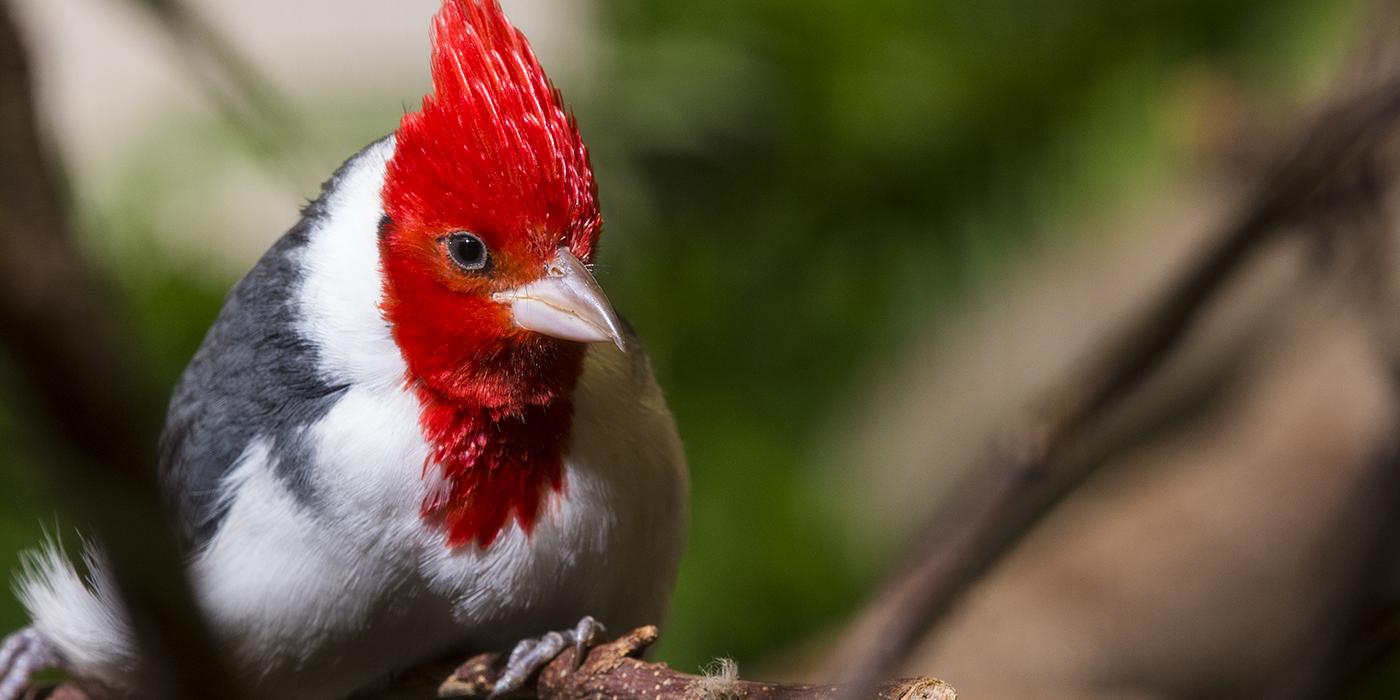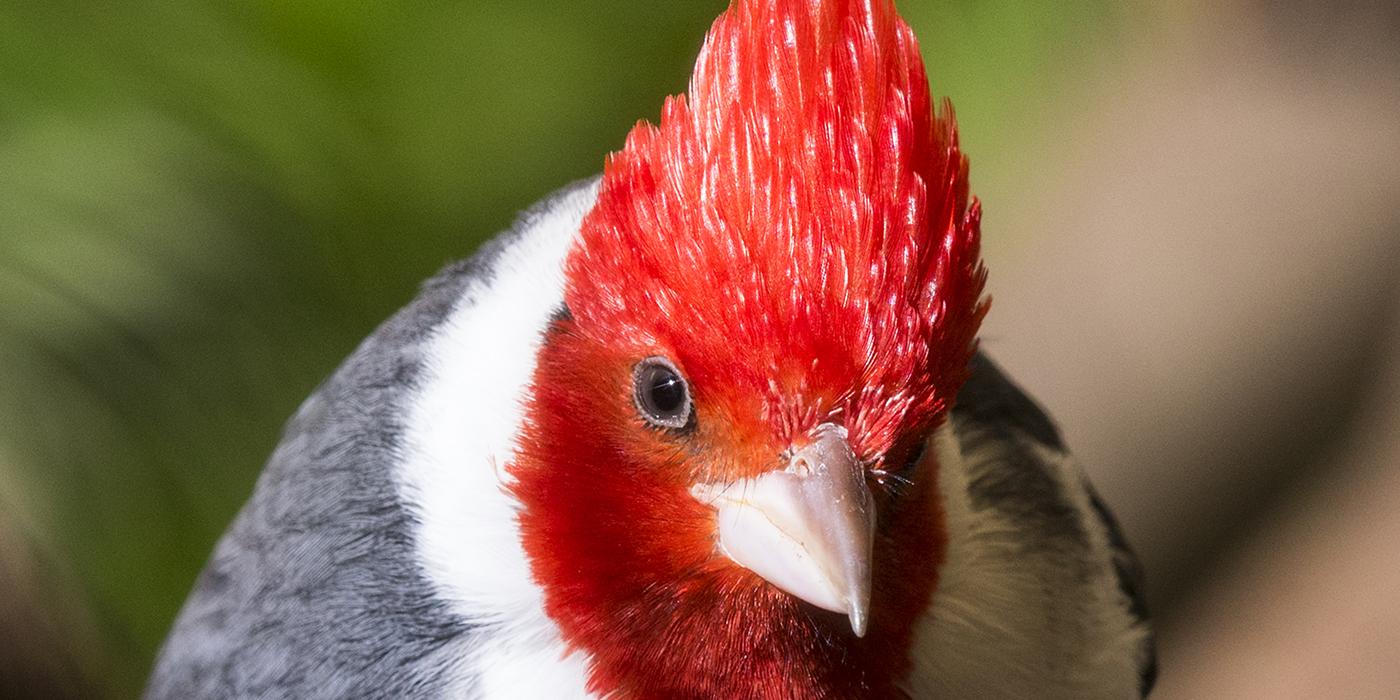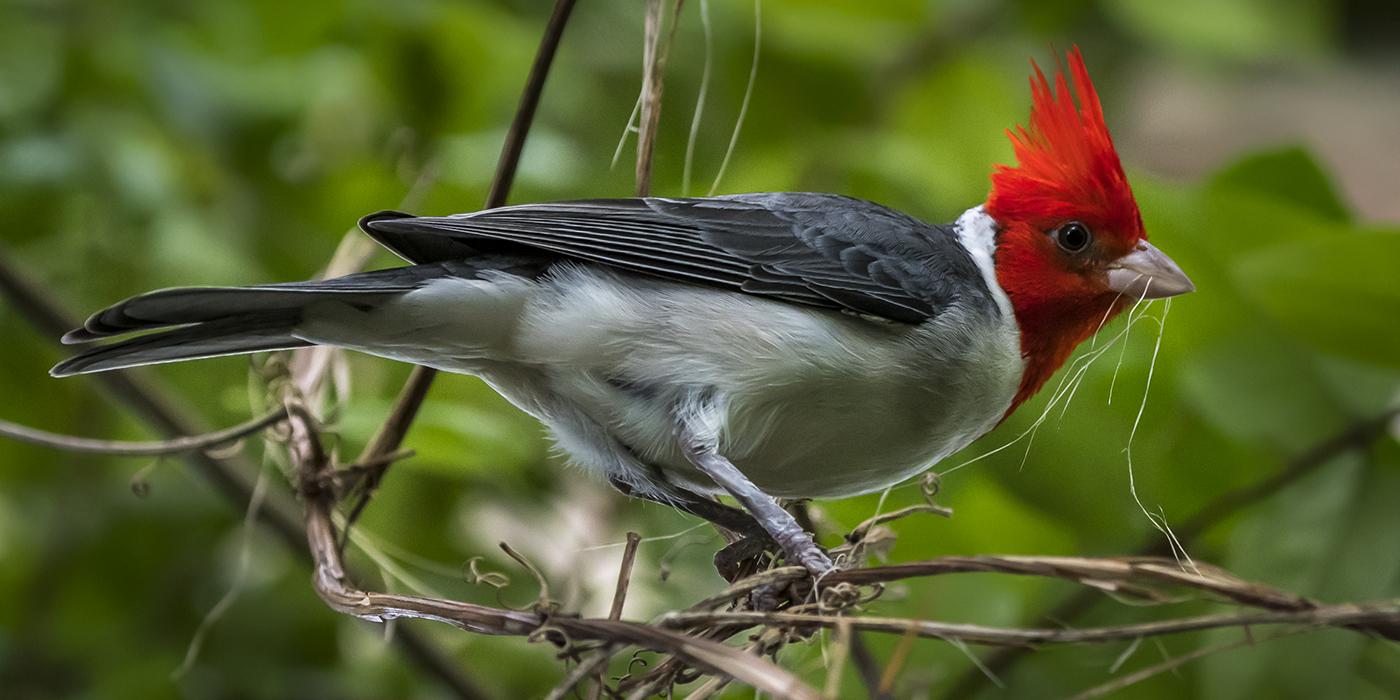Physical Description
Unlike Northern cardinals, males and females have similar plumage, with dark gray above on the back of their necks and their stomachs. The head, crest and upper breast are bright red. The red-crested cardinal has a silver-gray bill and dark legs.
Juveniles are similar in size to adults but lack the red feathers; instead, the head, crest and upper breast are brown and the bill is dark.
Size
The birds grow to 7.5 inches (19 centimeters) long.
Native Habitat
The red-crested cardinal is native to Argentina, Bolivia, southern Brazil, Paraguay and Uruguay. It has also been introduced to Hawaii and Puerto Rico.
Red-crested cardinals live in semi-open areas with shrubs and trees, such as parks, lawns, tropical shrub land and degraded forests.
Lifespan
Red-crested cardinals live 3 to 6 years in the wild and about 13 years in human care.
Food/Eating Habits
Red-crested cardinals eat fruit, seeds and insects.
Social Structure
Red-crested cardinals are often found in pairs or small family groups.
Reproduction and Development
The red-crested cardinal will lay two to five eggs. The eggs have a 12 to 13 day incubation period. They breed readily in human care.
Conservation Efforts
The red-crested cardinal is listed as a species of least concern by the IUCN because of its large range and estimated population size.
Help this Species
- Be a smart consumer. Choose products made with sustainable ingredients, such as Smithsonian certified Bird Friendly coffees, which support farmers striving to limit their impact on wildlife and habitat.
- Practice ecotourism by being an advocate for the environment when you’re on vacation. During your travels, support, visit or volunteer with organizations that protect wildlife. Shop smart too! Avoid buying products made from animals, which could support poaching and the illegal wildlife trade.
- Share the story of this animal with others. Simply raising awareness about this species can contribute to its overall protection.
Animal News

#DCPandas: Happy 4th Birthday, Qing Bao! ›

Canada Lynx Have Arrived at the Smithsonian’s National Zoo ›



